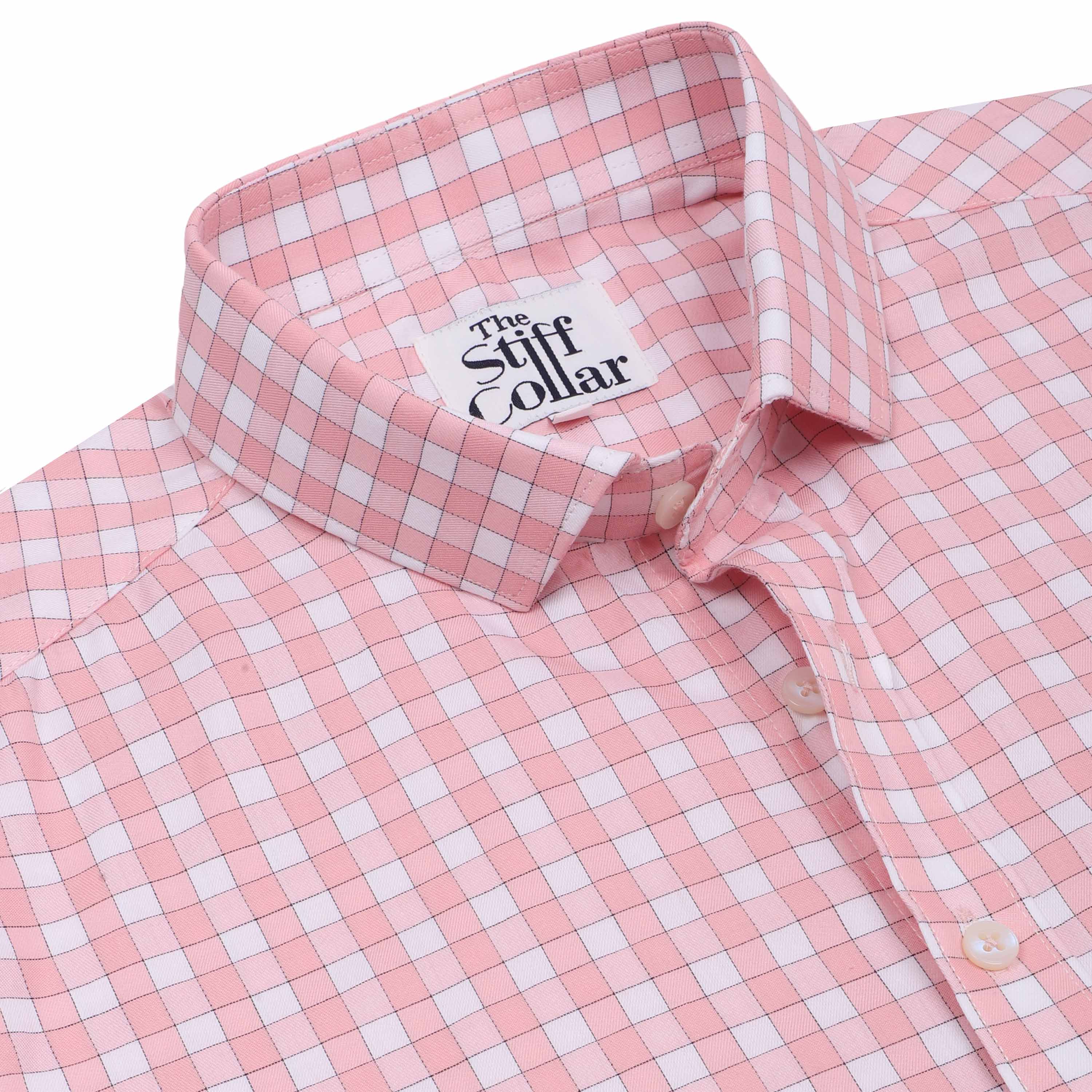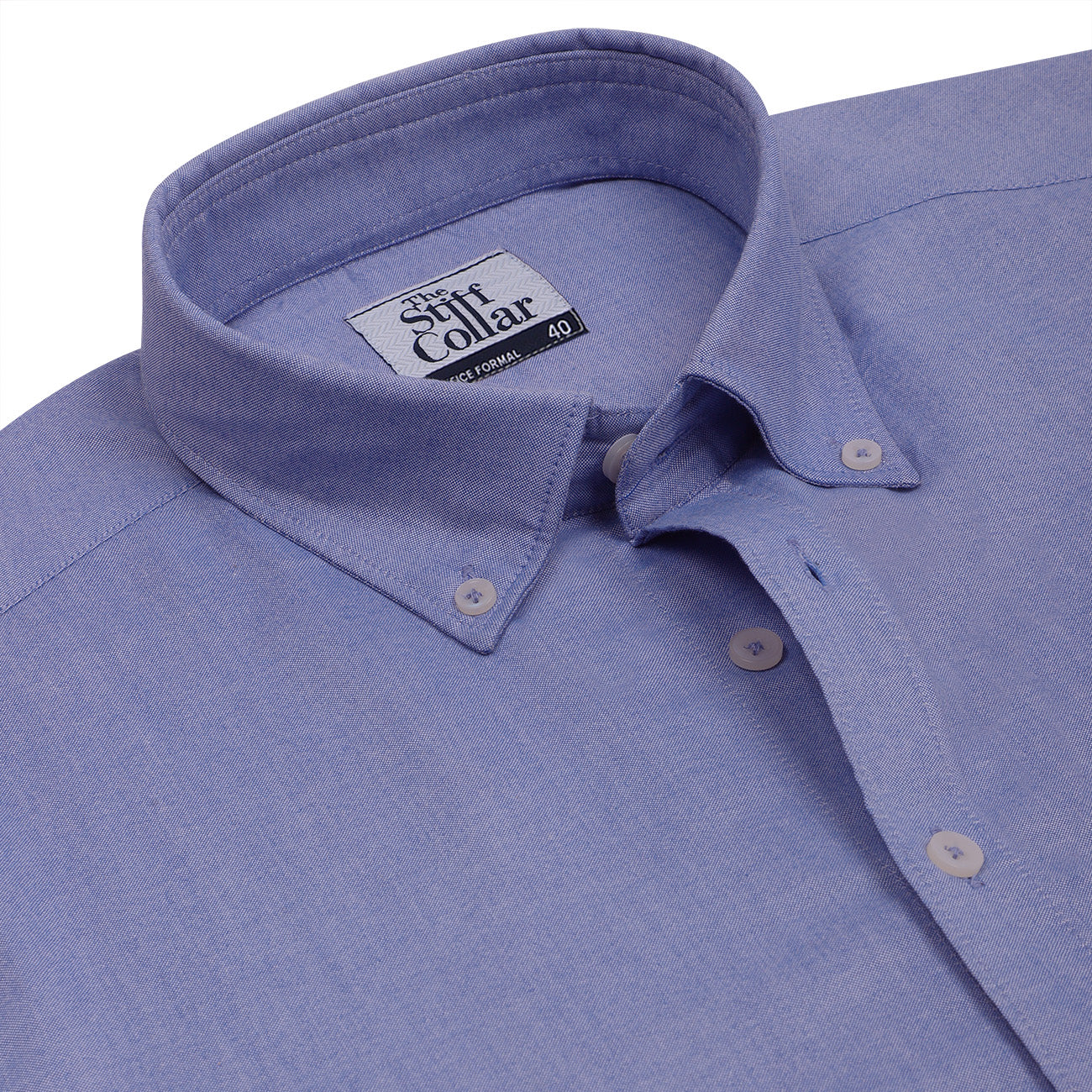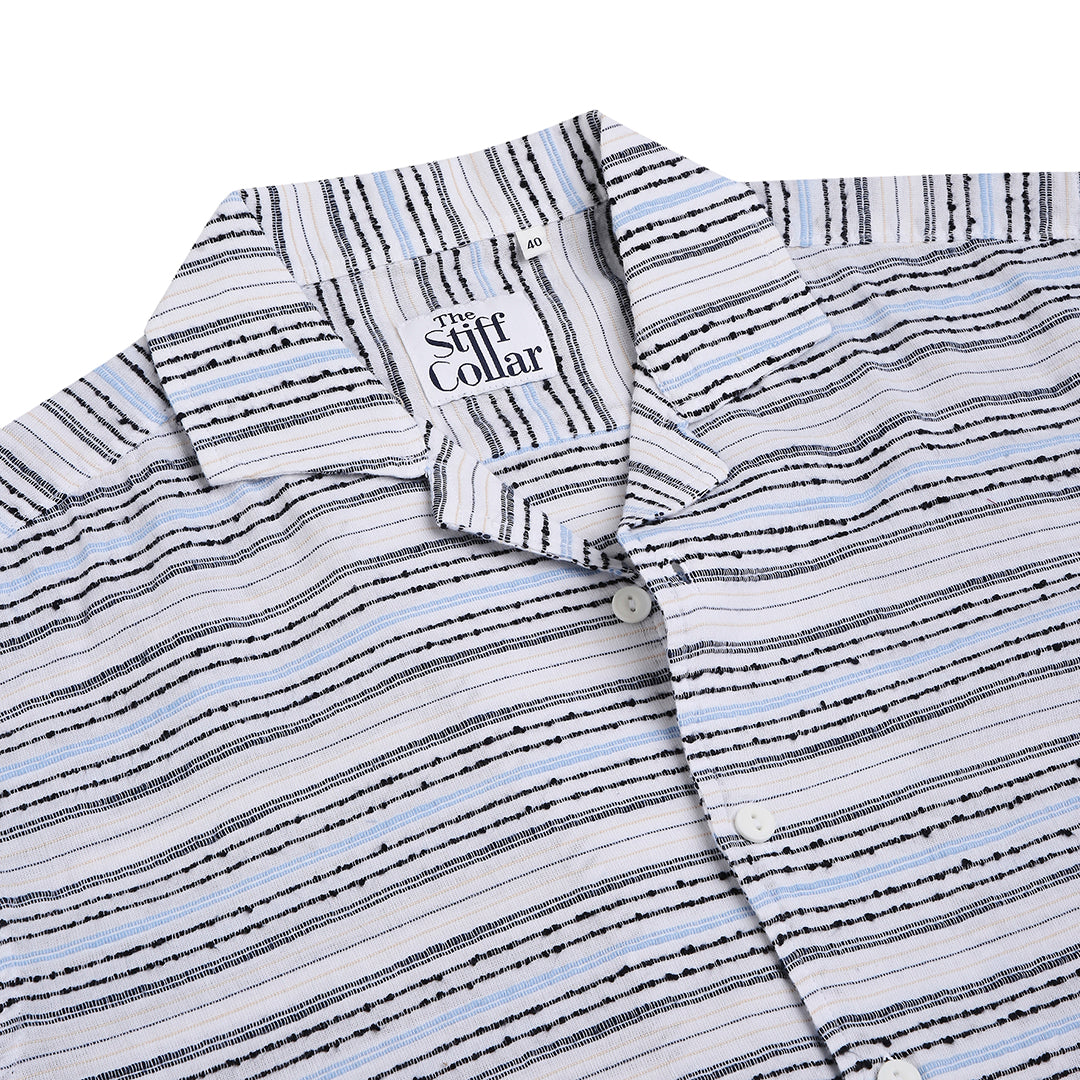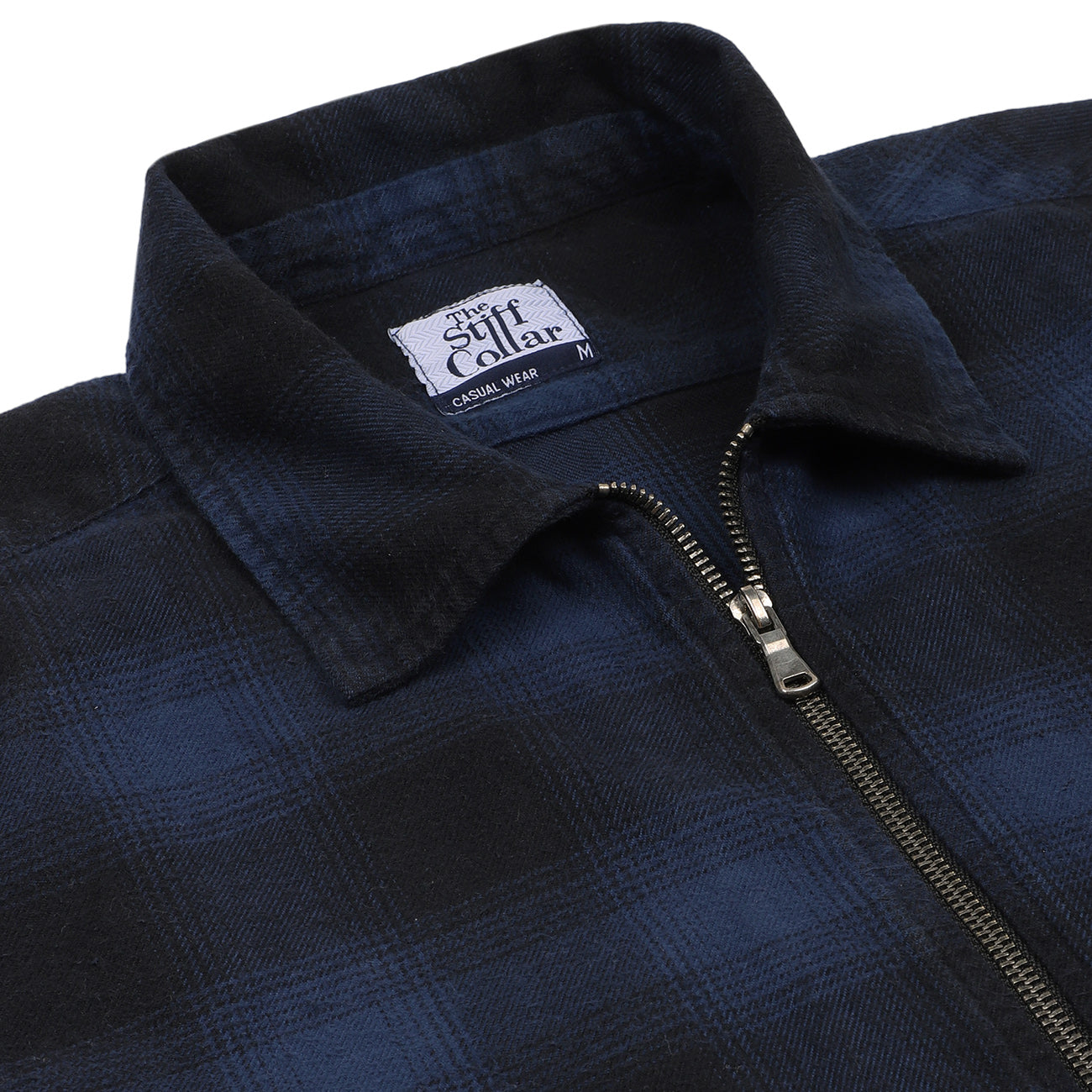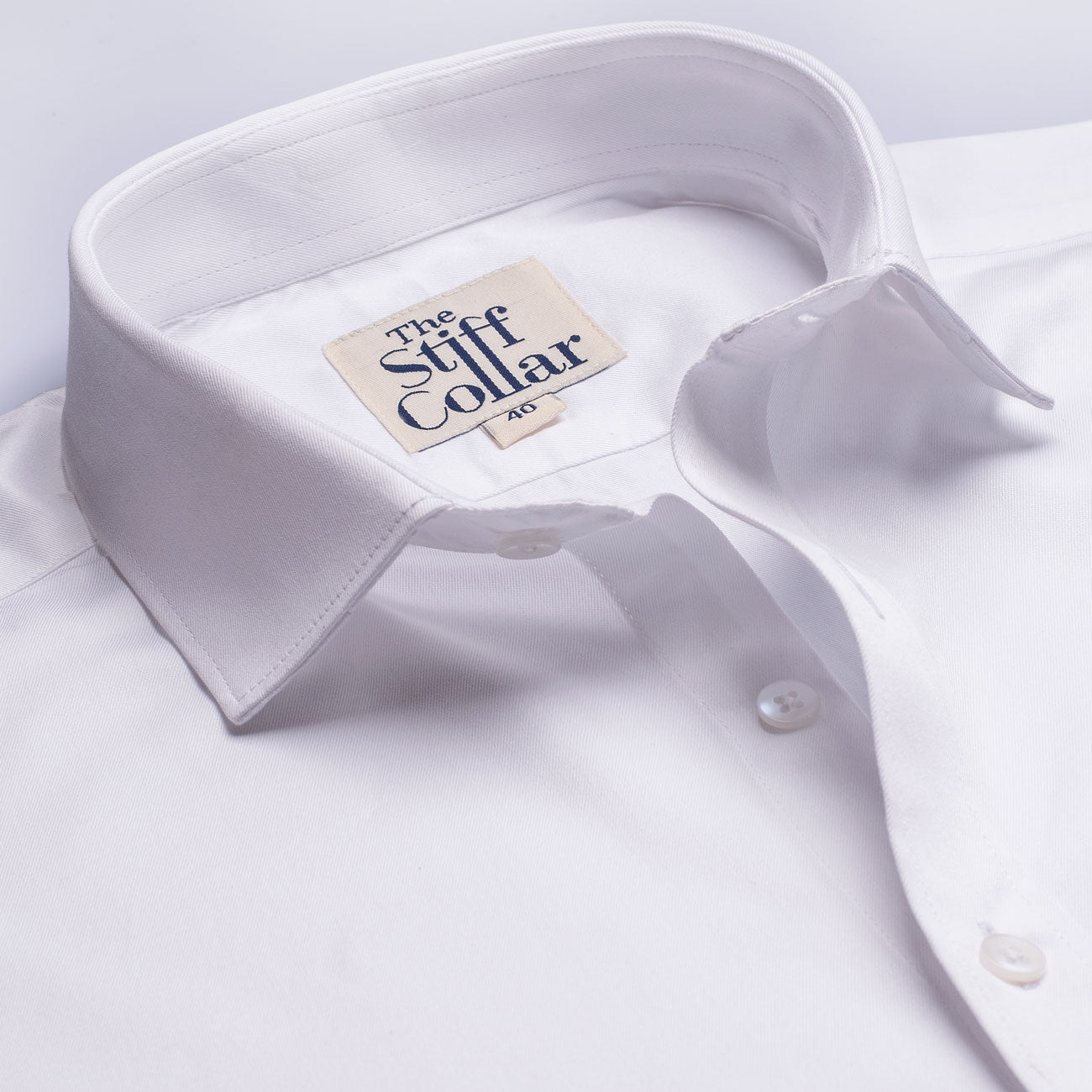1. Graph Check
The simplest, and most commonly found, checked fabric used in men’s tailoring is the ‘graph check’ - named due to its resemblance to graph paper. The graph check pattern is characterised by a single colour uniform grid on a plain, often white, base. A white shirt with a navy blue grid, which is conservative and subtle, is a staple in most men’s wardrobes. Other variations include red, green, yellow, and pink checks, amongst others. Usually, the boxes of the graph check are small, around a quarter of an inch, and the general rule is that the bigger the squares the more casual the shirt. Graph check shirts can be worn with a tie.

2. Windowpane
When a graph check contains larger squares, the pattern may be referred to as windowpane, referencing older fashioned windows that had divided panes. Window pane checks feature a single colour fine lined check on a plain background. Due to the larger size of the check, garments with windowpane checks are considered less formal than a graph check. Windowpane woollen waistcoats and jackets are a classic wardrobe staple of the traditional English country gentleman. Although similar to the graph check, the grid formed by the crossing lines of the windowpane pattern often creates rectangles rather than perfect squares. These rectangles are always longer in the vertical dimension, tall rather than wide, which can create a subtle sense of added height in the wearer.

3. Tattersall
Next up in terms of complexity is the Tattersall check, which is the same as a graph check but it involves lines of two or more different colors. Some possibilities are blue and black, green and blue, red and blue, or orange and blue to name just a few. The lines that make up a tattersall can be of different thicknesses or solidity, being clearly defined or faded back, but the size of the squares they form is always uniform. The Tattersall pattern is named after Richard Tattersall, who founded a London horse market in 1766 which remains to be the leading auctioneer of horses in Europe today. The fabric known as Tattersall was originally used for horse blankets in the late 18th century before seeing more widespread use. Tattersall is mostly used for shirts and waistcoats, and has a traditional association with British country style, which is not surprising given its origin. Tattersall can be worn for rural pursuits but also in an office environment due to its ease of being matched with a tie.

4. Gingham
Gingham (sometimes called “Vichy” in Europe) is the simplest of the checks involving thicker lines, in this case, generally a single colour crossing on a white background. Blue tends to be the most popular, though many colors of gingham are possible. When the colored lines cross one another, they result in darker versions of the color, adding richness. Ignoring the connotation of gingham with Italian restaurant tablecloths, Gingham is a lighthearted, casual check which is ideal for the summertime. Gingham shirts should not be worn with a tie, or with garments of a contrasting colour.

5. Shepherd’s Check
As its name implies, shepherd’s check is another rural pattern, this one originally used by Scottish shepherds on the border with England, so we have one check that originated with horse blankets (Tattersall) and another with sheep blankets. Shepherd’s check looks almost like a gingham but is distinguished by the visibility of a twill pattern. That is, you can see the texture of the weave intersecting the squares, which makes the pattern more complex and textural. As with gingham, shepherd’s check usually appears as a single colour on a white ground. Again, like with Gingham, the Shepherd’s check is usually an informal, casual-wear fabric.

6. Gun Club Check
Traditionally, a gun club check meant four colors of crossing lines–black, rust, gold, and green - designed as an homage to the colours present in the landscape of the Highlands (as a kind of hunter’s camouflage). However, these days, it’s equally common to find gun club checks in only two colors, usually brown and blue, though such patterns are sometimes incorrectly labelled as shepherd’s checks, so identification can be tricky.




Like gingham and shepherd’s check, the lines in a gun club check are even and fairly thick, and like shepherd’s check, the diagonal twill pattern is visible. What makes gun club check unique is the presence of two or more colours.
Although of Scottish derivation, a 'district check' associated with a particular area in the west Highlands, it was later adopted by the American Gun Club for their overcoats, and sport coats in 1874.

7. Tartan (“Plaid”)
The most complex checked pattern in menswear is tartan, formed by intersecting lines of varying thickness and any number of colors. Though it is not always the case, usually the squares and rectangles on a tartan are different sizes because the space between the lines does not have to be even. This flexibility, and the fact that new tones are created when different colored lines cross, allow for a great variety in the appearance of tartan cloth. In North America the word “plaid” would be used to describe what is called a “tartan” in the UK, and what is ‘plaid’ in the UK could be any type of check - complicated hey?!
In Scotland, the home of tartan, families and regions will have their own specific, unique tartan.
Due to the brightness and complexity of the pattern it is worn mostly as a casual-wear fabric in modern days. In North America, plaid shirts made from flannel are often associated with lumberjacks or cowboys - giving the fabric a sports/outdoor connotation. Meanwhile, in Scotland, tartan firmly remains as a symbol of their traditional heritage and national dress.

8. Madras
The most famous plaid of non-Scottish origin is the Madras - an intense, brightly coloured, warm weather fabric. Named after the city in India where it is woven (modern-day Chennai), Madras is a handwoven slubbed cotton. It resembles Scottish tartan but incorporates colors more commonly found in Indian textiles such as yellow, pink, and orange. Due to the warmer colours, Madras checks are suitable for casual occasions and summer wear.

9. Glen Check
Finally, we have glen check (sometimes also called glen plaid), which isn’t technically a pure check because it admits more than just lines to make up the grids; it also contains varied houndstooth patterns making up the lines and filling the blocks created by them. However, given its name and the fact that the crossing pattern of rectangles is visible, it definitely deserves a mention here as one of the most popular patterns in menswear.
Another pattern from Scotland, it was first developed by Elizabeth Macdougall as her estate check, before Edward VII noticed it and fell in love with it and modified it slightly to create the ‘Prince of Wales check’.


